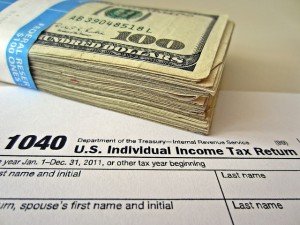
Do you use independent contractors as part of your staffing model? If so, you should be aware of sweeping changes that the Department of Labor (DOL) is making to determine if your workers are truly independent contractors or employees.
In the past, the Department of Labor (DOL) used to rely on the IRS 20-factor test to determine if a worker was an independent contractor or employee. The DOL replaced the old IRS test by issuing Administrator’s Interpretation 2015-1 in July 2015.
The DOL describes independent contractor misclassification as resulting in an “uneven playing field for employers” and as a “means to cut costs and avoid compliance with labor laws.” The old IRS 20-factor test used to consider:
• Whether the worker supplied their own tools and materials
• If the worker determined the hours worked
• If the work was temporary or permanent
Now the DOL uses these 6 factors as part of an economic realities test, including whether:
• The work performed is an integral part of the employer’s business;
• The worker’s managerial skill affects the worker’s opportunity for profit or loss;
• The worker is retained on a permanent or indefinite basis;
• The worker’s investment is relatively minor as compared to the employer’s investment;
• The worker exercises business skills, judgment, and initiative in the work performed; and
• The worker has control over meaningful aspects of the work performed
The Administrative Interpretation states that all of these factors must be considered when making this determination, but the DOL explains that some of these factors are more compelling than others. For example, the DOL considers whether the contractor is performing work that is integral to the business.
Ultimately, though, the DOL has set forth a new standard for independent contractors. The essential question is whether the worker is “economically dependent on the employer or truly in business for him or herself.”
To summarize, if you’re the sole employer of an “independent contractor” the DOL will find it very likely that the worker is really an employee.
It’s About Tax Revenue
In 2014, the DOL granted $10.2 million to 19 different states to implement and improve misclassification detection and enforcement in unemployment insurance programs. As of today, the DOL has information sharing and law enforcement agreements between 25 states to “work together to protect the employees’ rights and level the playing field for responsible employers by reducing the practice of misclassification.”
Additionally, the DOL and the IRS have an agreement to share information about misclassifications.
Consider that employees are subject to these rules:
• FLSA regulations, including minimum wage and overtime rules
• Workers compensation
• Unemployment, FICA, Medicare, and other taxes
• Contributions to ERISA healthcare plans and 401(k) plans
If the DOL determines that a worker is improperly misclassified as an independent contractor, the employer is potentially subject to back overtime wages, taxes, benefits, interest, and penalties.
Scenarios
In the past, some companies used to mandate that independent contractors create an LLC or S Corp to further distance their relationship. That approach no longer works. The DOL determines if the independent contractor has their own business and multiple sources of income.
Let’s explore two scenarios that are common in the restaurant industry.
The Landscaper
Your restaurant contracts with Sam to perform lawn and tree trimming services. Sam works for several businesses in the area and sets his own schedule. He’s not an employee since he’s not solely economically dependent on your business.
The Recruiter
Sheila is a contract recruiter who works at your corporate office. Her work schedule is determined by the company and she’s currently only working for your company. The DOL will likely determine that she’s an employee and not an independent contractor since she is economically dependent on your company.
Take Action Now
Interest, taxes, and penalties accrue every day that a contractor is misclassified. So take action now by:
• Identifying all contractors who work at your corporate office and field location. Don’t forget about the “contract” pizza delivery drivers, IT, and recruiters.
• Consider your hiring practices so you don’t run afoul of misclassifications. For example, don’t hire workers on a “contract” basis so you can evaluate them for fit and performance before you directly hire them. Unless they’re working on a specific project, and for multiple employers at once, you won’t pass the DOL economic test.
• If you convert a contractor to an employee, make sure they are classified correctly under the new FLSA regulations.
• Prepare your budgets accordingly to include overtime, benefits, FICA matches, unemployment insurance, and other taxes.
• Make sure you work with an attorney who specializes in wage and hour issues and has experience leading communication processes.